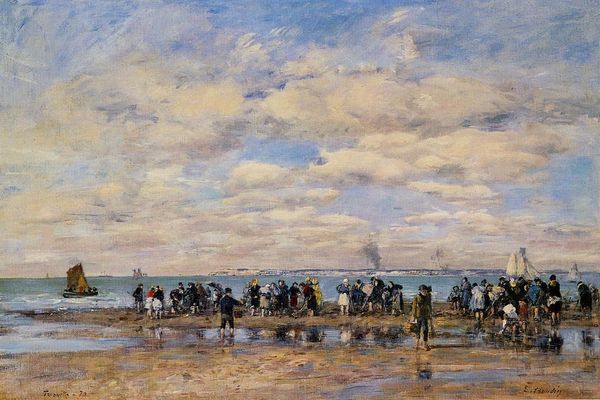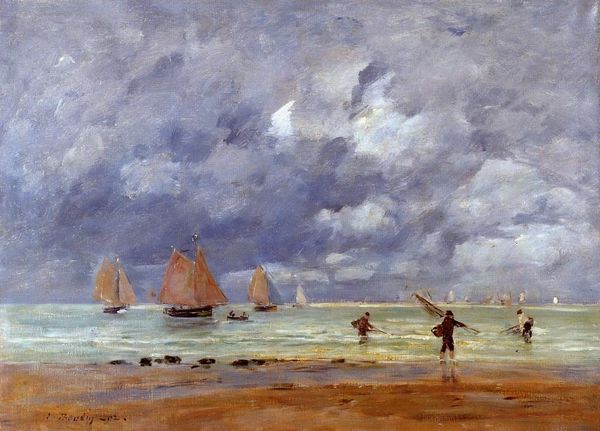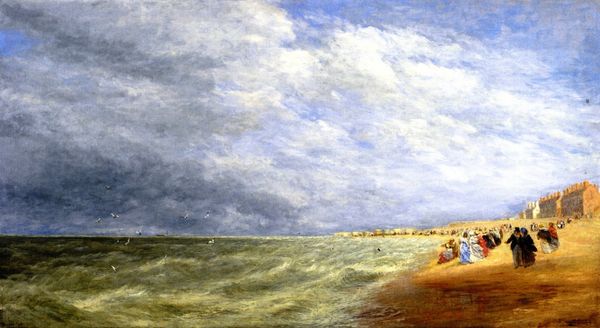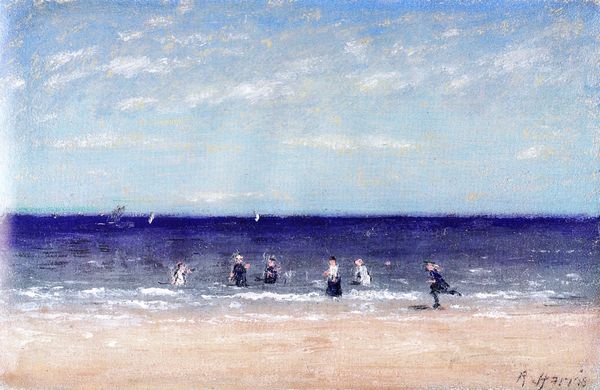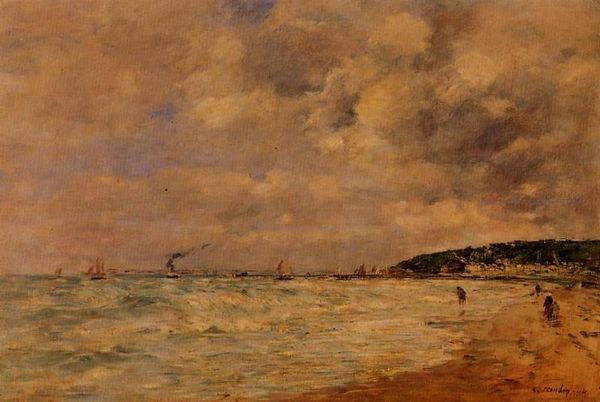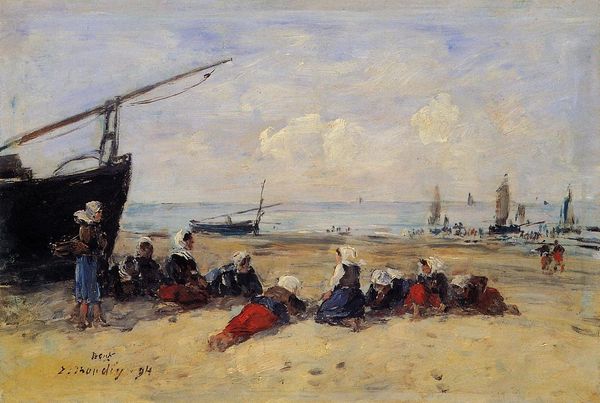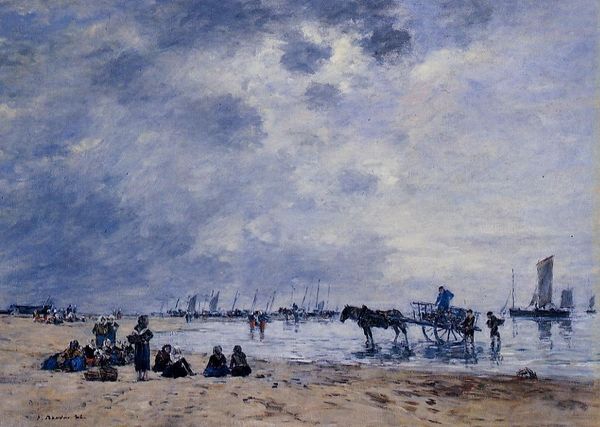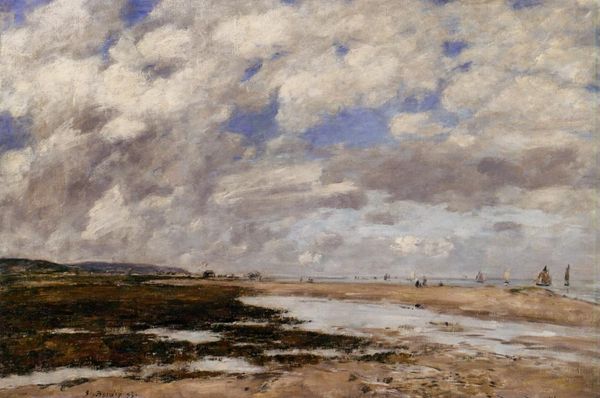
painting, plein-air, oil-paint
#
sky
#
painting
#
impressionism
#
plein-air
#
oil-paint
#
landscape
#
impressionist landscape
#
oil painting
#
water
#
painting painterly
#
genre-painting
Dimensions: 30 x 19 cm
Copyright: Public domain
Editor: So here we have Eugène Boudin's "On the Beach," painted in 1863. It's an oil painting that captures a beach scene with figures enjoying a day by the sea. The mood is rather calm, the sky and water blend together. How do you interpret this work? Curator: It's fascinating to consider this seemingly tranquil scene in the context of 19th-century French society. Boudin's focus on leisure and the bourgeoisie points to emerging social structures and the growing accessibility of leisure activities, yet access remained fundamentally unequal. The painting also shows class performances and privilege as status. Editor: Class performances? Curator: Precisely. Boudin isn’t just painting a landscape; he's capturing a moment of social negotiation. Look at the clothing, the parasols. These were markers of wealth and status, actively performed in public spaces. Are we seeing a straightforward depiction of a beach day, or a coded representation of societal power structures at play? Editor: So, it's not just a pretty picture. It’s also commenting on class and maybe even gender roles? Curator: Exactly. Consider who is represented and how. The women, largely confined to the beach, under parasols. The men, perhaps more free to move. Boudin, perhaps inadvertently, highlights these societal constraints. It pushes us to consider how seemingly innocent scenes are embedded with complex social and political narratives. Do you find his painterly style adds another layer? Editor: It does! It's like the fleeting nature of the moment reflects the instability of these social structures, perhaps suggesting change on the horizon. Thank you, that's a great viewpoint. Curator: And it highlights that art doesn’t exist in a vacuum. Engaging with the social and historical context provides new layers for discussion.
Comments
No comments
Be the first to comment and join the conversation on the ultimate creative platform.
